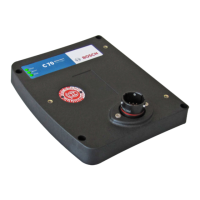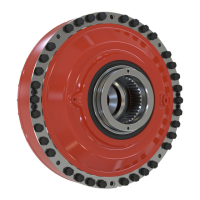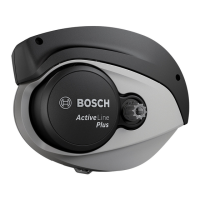Commissioning 37/52
RE 91071-01-B/03.2015, A2FM/A2FE Series 70, Bosch Rexroth AG
Use only a hydraulic fluid that conforms to the following requirements:
You can find details of the minimum requirements on hydraulic fluids in Bosch Rexroth
data sheets 90220, 90221, 90222, and 90223. The titles of the data sheet can be
found in Table 1 “Required and supplementary documentation” on page5. You can
find details of permissible and optimal viscosity in data sheet 91071.
To ensure the functional reliability of the axial piston unit, cleanliness level 20/18/15
according to at least ISO 4406 is necessary for the hydraulic fluid. At very high
hydraulic fluid temperatures (90 °C to maximum 103 °C, measured at port T
1
or T
2
),
a cleanliness level of at least 19/17/14 in accordance with ISO 4406 is necessary.
For permissible temperatures, see data sheet 91071.
1. Place a drip tray under the axial piston unit to collect any hydraulic fluid that
may leak.
NOTICE! Contaminated hydraulic fluid!
The cleanliness levels of hydraulic fluids on delivery do not normally conform to the
requirements for our components.
▶ Use a suitable filter system to filter hydraulic fluids during filling to minimize solid
impurities and water in the hydraulic system.
2. Fill and air bleed the axial piston unit via the appropriate ports, see Chapter7.3
“Installation position” on page26. The hydraulic lines of the system must also
be filled.
NOTICE! Risk of property damage due to improper lubrication!
Product can be damaged or destroyed!
▶ When using a shut-off valve in the drain line, make sure that the drive of the axial
piston unit can only be started when the shut-off valves are open.
3. When using a shut-off valve in the drain line, only operate the axial piston unit
when the shut-off valves are open.
8.1.2 Testing the hydraulic fluid supply
The axial piston unit must always have a sufficient supply of hydraulic fluid. For
this reason, the supply of hydraulic fluid must be ensured at the start of the
commissioning process.
When you test the hydraulic fluid supply, constantly monitor the noise development
and check the hydraulic fluid level in the reservoir. If the axial piston unit becomes
louder (cavitation) or the drain fluid is discharged with bubbles, this is an indication
that the axial piston unit is not being sufficiently supplied with hydraulic fluid.
For information on troubleshooting, see Chapter14 “Troubleshooting” on page46.

